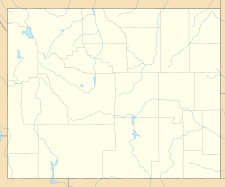Mammoth Glacier facts for kids
Quick facts for kids Mammoth Glacier |
|
|---|---|
| Type | Mountain glacier |
| Coordinates | 43°10′05″N 109°39′59″W / 43.16806°N 109.66639°W |
| Length | 1.4 mi (2.3 km) |
| Terminus | Talus |
| Status | Unknown |
Mammoth Glacier is a large ice mass found in the Bridger Wilderness area. This wilderness is part of the Bridger-Teton National Forest in Wyoming, USA. Glaciers are like very slow-moving rivers of ice. Mammoth Glacier is an important part of the natural landscape in this region.
Contents
What is Mammoth Glacier?
Mammoth Glacier is a type of mountain glacier. It is known for being the biggest glacier on the west side of the Continental Divide in the Wind River Range. This means it's a really significant glacier in the western United States.
Where is it Located?
This glacier is nestled in a special bowl-shaped valley called a cirque. This cirque faces north, which helps the glacier stay cold and icy. It sits on the northern slopes of a mountain called Twin Peaks. Just to its west is another peak, Mount Woodrow Wilson.
The glacier is in Sublette County, Wyoming. It's part of a large group of glaciers found in the American Rocky Mountains.
The Continental Divide
The Continental Divide is like a giant line that runs through North and South America. It separates the rivers and streams that flow to the Pacific Ocean from those that flow to the Atlantic Ocean (or the Arctic Ocean). Mammoth Glacier is on the west side of this divide. This means its meltwater eventually flows towards the Pacific.
On the other side, to the east of the Continental Divide, is another glacier called Dinwoody Glacier. It's interesting how these two large glaciers are so close but on different sides of this important natural boundary.
Why is Mammoth Glacier Important?
Mammoth Glacier is a key part of the Wind River Range ecosystem. It helps supply water to streams and rivers as its ice melts, especially in the warmer months. Studying glaciers like Mammoth Glacier helps scientists understand more about the Earth's climate and how it is changing over time.


